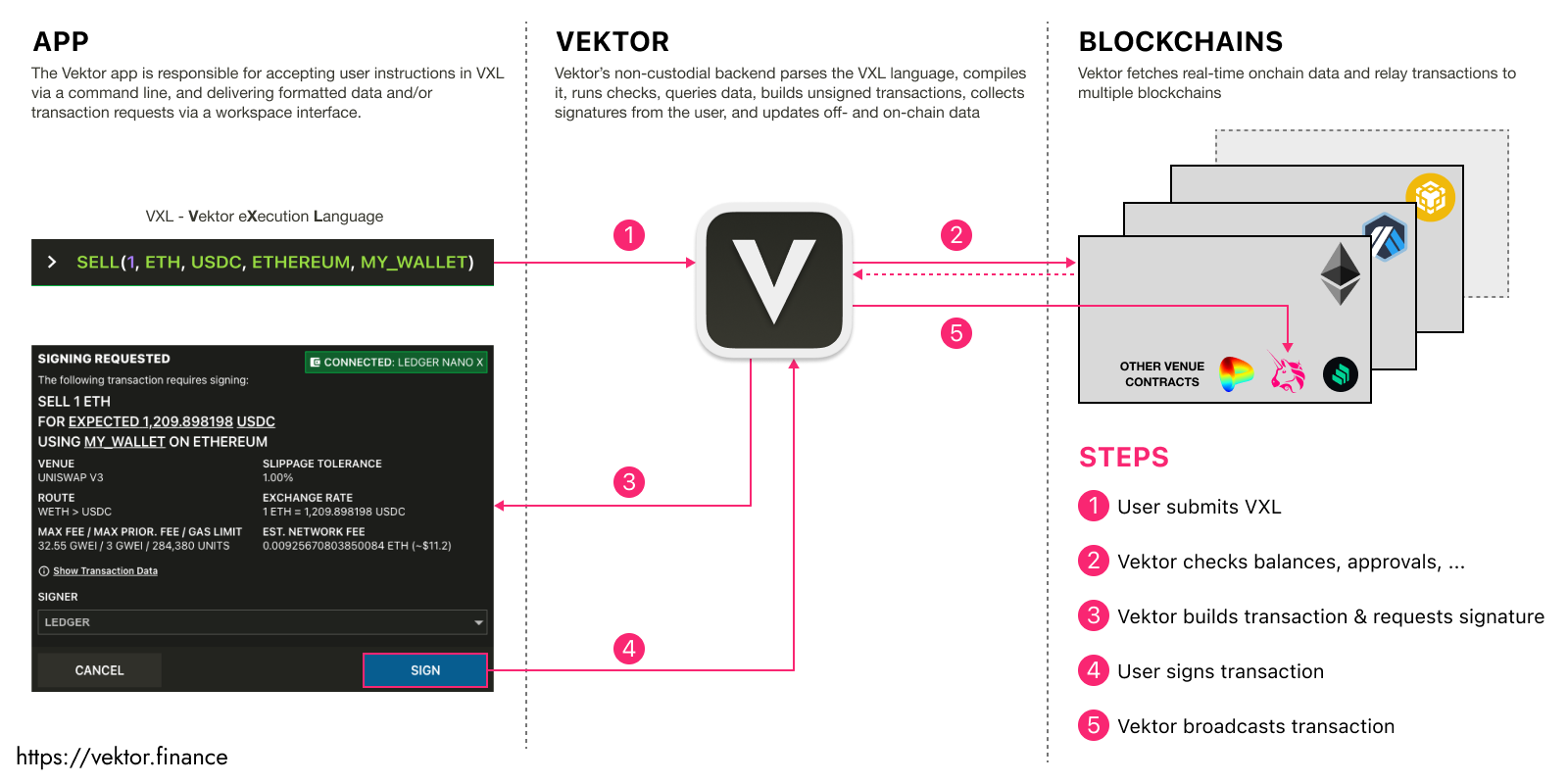How Vektor Works
Vektor is an interface tool only, and never takes custody of your private keys or assets. Transactions made using Vektor are signed by the user and then broadcast directly to blockchain nodes to make changes on-chain. In this way Vektor is "Non-custodial" like most of the DApps ('Decentralized Apps') found in DeFi.
Vektor also has a backend server that runs on typical cloud infrastructure. You log in to Vektor with an email and password like you do with any 'web2' product. In this regard, Vektor is not 'decentralized'.
What differentiates Vektor, and makes up its core technology, is the depth of the capabilities of its backend. In short, it takes in user-entered commands (in the form of VXL) and returns useful structured data, unsigned transactions, or both. Behind the scenes Vektor is parsing the VXL language, compiling it, running checks, querying data, building transactions, updating off- and on-chain data, and much more. The web app at https://app.vektor.finance is really just a lightweight terminal interface for this powerful backend system.
A high-level diagram of how Vektor works is below.

This system design allows Vektor users to access a much richer and more powerful experience to interact with DeFi, with unique capabilities that include:
- Standardized execution across multiple venues and chains from the same interface, facilitating seamless transacting functionalities without the need for dozens of open browser tabs and extensions;
- Reading cross-chain data with queries that can search all supported chains and venues in one shot, while processing this data with powerful text-based filters and formulas;
- New types of on-chain transaction that are more bespoke and can do more than is typically available on Dapp UIs;
- Direct integrations with hardware wallets, without the need for intermediate software to be running at the same time;
- Ability to create powerful alerts using arbitrarily complex conditional statements that draw on a large set of cross-chain data points;
- Unlimited scrollable workspaces that arrange different types of output including cross-chain data query tables, individual data points, and custom formula-based metrics, all displayed with live-updating data pipelines;
- ... and much more
Questions?
For more information please get in touch.
